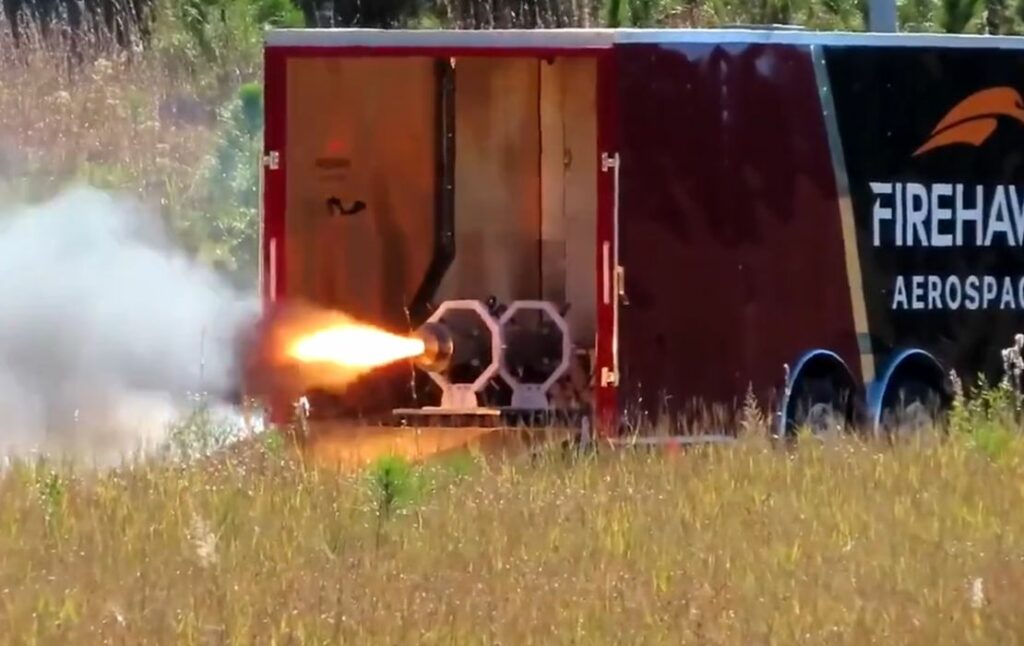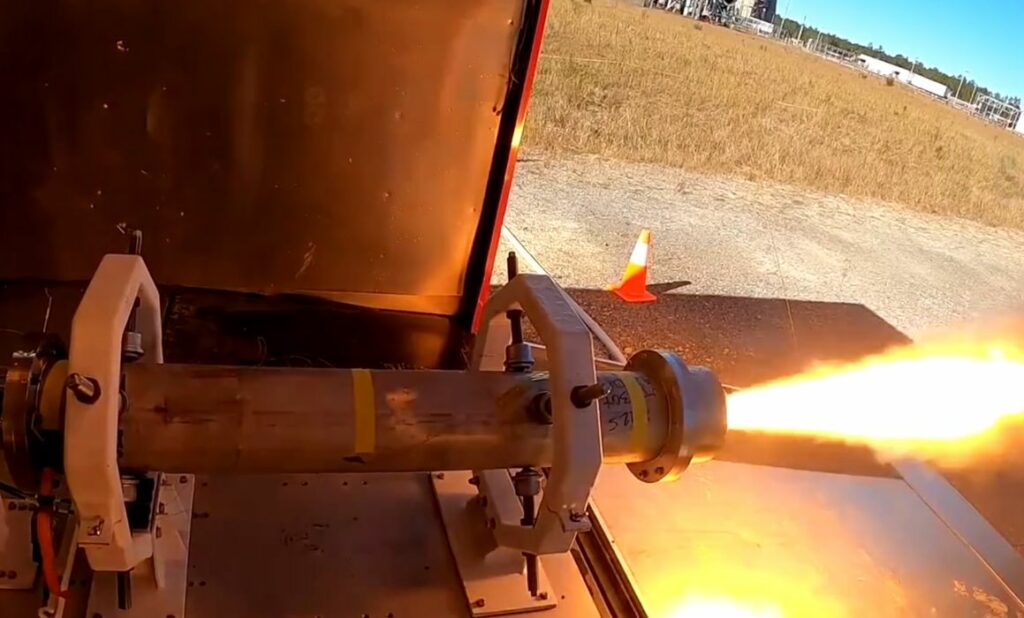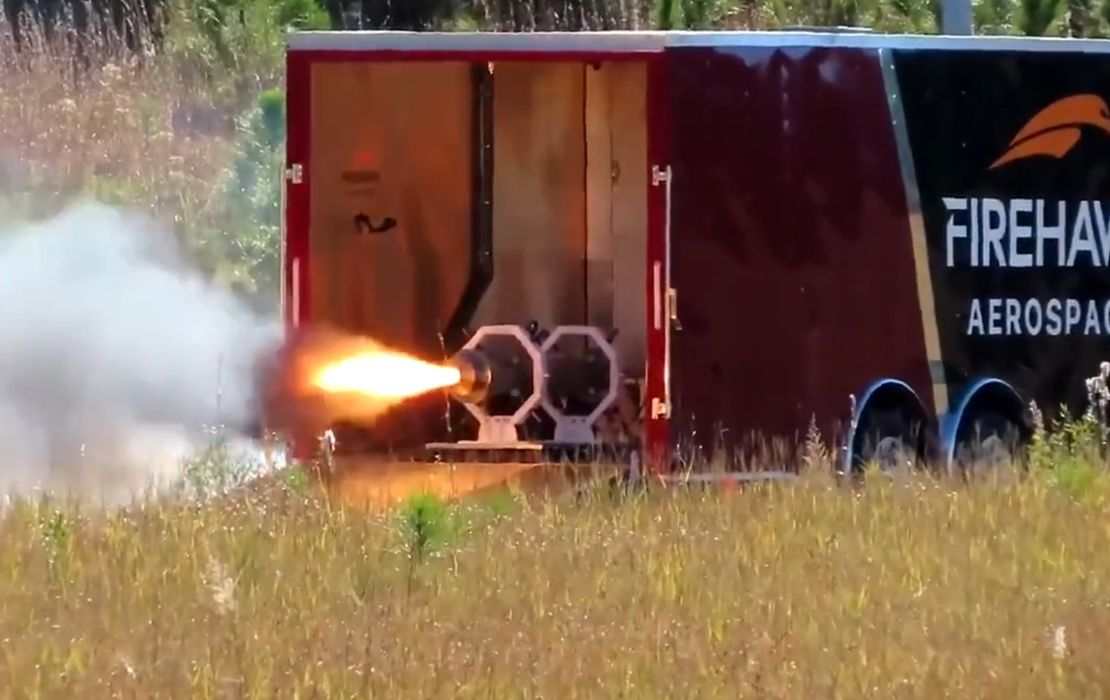
Firehawk Aerospace is 3D printing rockets, but not in the way you might think.
3D printing has taken the aerospace industry by storm, and in particular rocketry. The reason is simple to understand: 3D printed parts can have complex geometries, which enables the development of incredibly lightweight parts that perform the same functions. Saving the weight makes the rockets more efficient, so there you go.
As a result we see basically every major rocket manufacturer intensely using metal 3D printing to build rockets, and in particular the highly complex engines that benefit the most. Years ago NASA made a splash by designing a 3D printed engine that reduced the number of parts from dozens to only a handful through this technique, which saved not only weight but also reduced assembly time and lowered risk of failure: fewer seams to fail.
One rocket manufacturer, Relativity Space, is literally 3D printing the entire rocket using an advanced robotic metal 3D printer of their own design.
Firehawk Aerospace is a startup company that is also using 3D printing technology for their rocket. However, instead of 3D printing the rocket or its engines, they are 3D printing the fuel.
Hold on, isn’t rocket fuel liquid? How could you 3D print that?
That’s true: many rockets use liquid fuel. The reason for using liquid propellants is that the plumbing systems can then meter the fuel and oxidizer into the engine and offer controllable thrust. That’s important in many scenarios, such as when you’re landing a rocket.
However, the big problem with liquid fuels is that they often must be stored at ultra cold temperatures, under pressure and the tend to evaporate.
The solution is solid fuels. These are mixes of fuel and oxidizer particles that are held together in a shape with a binder. Since they aren’t under pressure or at a low temperature, they are “shelf stable” and can wait for years until used. Then an igniter lights one end and the rocket burns through the material until it’s all gone.
While stable, solid rockets have a problem: once lit, you can’t shut them down. They keep burning until the end. Thus there’s really no way to control their thrust.
That is, unless you somehow were able to control the geometry of the solid fuel. Imagine, for example, if the burn encountered some sparse voids in one portion of the burn. There would be less thrust.
Now imagine figuring out a complex “thrust profile” and generating a rocket fuel geometry that could deliver that profile when lit.
Firehawk Aerospace is 3D printing that thrust profile.

While the company has been developing small-scale demonstrations of this technology, it’s quite clear that it could be scaled up to massive sizes if required.
That’s probably one of the reasons the company recently received US$17M in investment, and likely will raise more in the future.
So far the company has focused on engines only, and is leaving their application up to others to make use of them in their own rockets. We don’t quite yet know how these new engines could be used simply because it’s something that’s never really existed previously.
Once again, 3D printing is used in a very unexpected manner.
Via TechCrunch and Firehawk Aerospace

